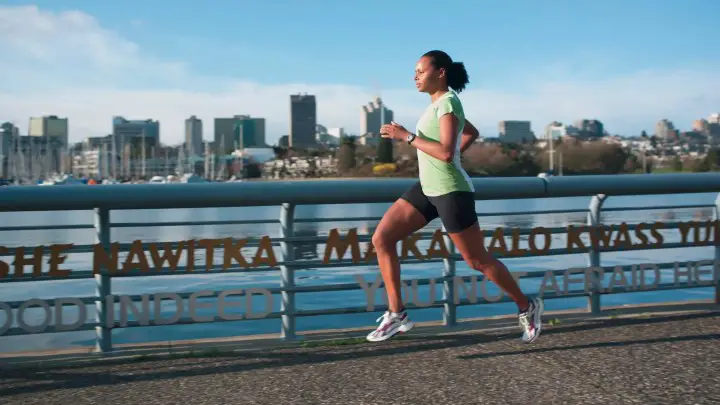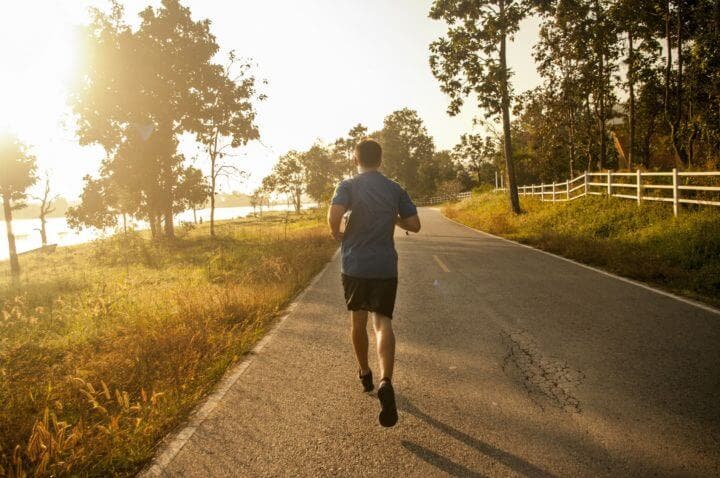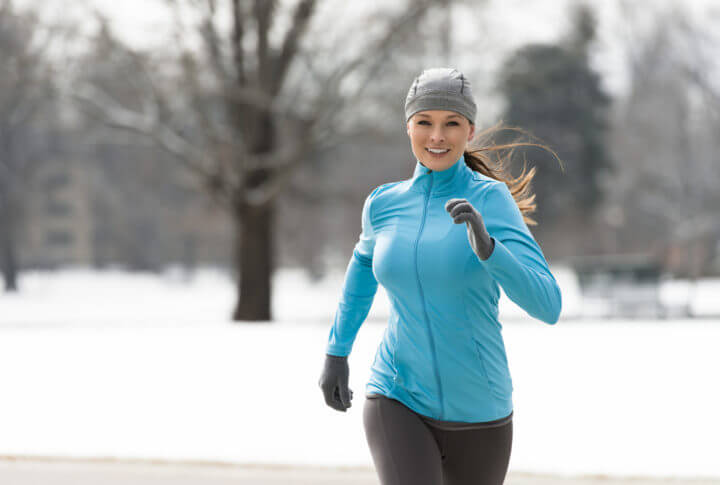There are two decisive factors when it comes to getting marks in the race, which you have been able to neglect: the terrain and the weather. While the first one is easy to control, it is not unusual, however, to go to training waiting for the foreseeable weather conditions in your area and end up finding a very different scene.
The truth is that the weather man is not yet bold enough to predict 100% the temperature, humidity, or wind that will occur on a specific day and place. Nor is it anything new that our performance will not be optimal if we usually train at 25ºC but on race day the thermometer shows 35 or 10ºC.
This is why we must make sure we set up a plan B. It is true that our times, with a high probability, will fall compared to normal conditions, but with the advice we offer you we will try to reduce this difference to a minimum.

Adapt running training to unfavorable conditions
1. Try to acclimatize to the weather conditions
That’s how it is. Sometimes we must train in adverse conditions, both hot and cold and be aware in races that we cannot follow the same strategy as always if we have different weather conditions.
If you are in cold weather, one of the strategies we recommend is to train with more layers than usual when you go for a run outside. However, in this way you may inadvertently get warm, perspire excessively and stay cold. In addition to this, we also do not avoid ice and snow, both aspects that are solved if you train on a treadmill indoors.
We recommend running workouts on the treadmill up to two weeks before your race date. On the other hand, it would also be advantageous to use a sauna, if you have access and it does not pose a risk to your health, to spend a few minutes there after training on the treadmill.

2. Adjust your goals accordingly
Whether or not you’ve been able to incorporate heat acclimatization into your training, it’s always smart to adjust your race day goals to some degree if you expect hot conditions. It might be disappointing to throw away time that you have been visualizing for months, but it is key to remember that you are putting additional stress on your body.
Lowering the pace in the first half of the race is a good tactic to enjoy a pleasant experience and discover that you have more energy to achieve a solid finish. On the other hand, the heat that our body can withstand becomes more problematic as we advance in the race so starting conservatively will avoid pushing yourself to the limit so soon and will also allow you to make better decisions.

3. Choose your outfit well
At the other extreme, you may end up with a much colder day of the race than you are used to. While training for colder temperatures can be functionally difficult to do, luckily most people are not adversely affected by the colder conditions on race day.
In fact, most end up performing better and don’t have to adjust their pace because the body heats up quickly and allows you to feel more comfortable than the cold without the physical stresses that heat can bring.
If only the temperatures are colder than expected, you generally only need to be mentally prepared to feel a little uncomfortable at first. However, if you are not used to cold running, one strategy you can follow is to use an extra layer to start. You can always get rid of extra layers if you start to overheat.
The problem comes when you have to deal with rain and wind combined with colder temperatures. At this point you should take into account your core temperature and the risk of hypothermia. For these cases, wind jackets or rain jackets are useful to prevent the water and wind from cooling the central temperature.

4. When you can, go out to train in the rain
For many of us, waking up to rain can quickly send us to the treadmill (or skip a training day entirely), however, it is key to remember that a race would generally go on as planned if it rained.
Assuming it is safe (you have lighting, etc.), we advise you to continue with your training, both for mental preparation and to discover how to dress to be comfortable in these conditions.

Don’t forget to hydrate
By training in colder conditions, you may be able to hold on with sips of water every time you find a source of drinking water. On a hot day, you will undoubtedly need to drink more before, during and after the race to avoid putting your body in distress and dehydration.
However, hydration is essential in both cases, so do not neglect it. You can get used to drinking more in a race by carrying a small bottle of water in hand with you.
Adding electrolytes to your fluids and drinking heavily in the days leading up to the race is key to making sure you’re ready. Start your hydration plan early in the race and remember to do it often.

conclusion
Remember that the weather is not among the factors that you can control. If you don’t want to neglect your records, it is important to also train in adverse weather conditions, as well as follow the advice we give you to get your best marks in the race.
References
- Benton. E. How to Adjust Your Race Goals in Less-Than-Ideal Conditions. For Active. [Revised March 2020]